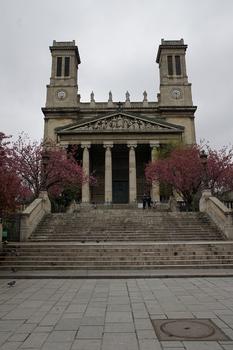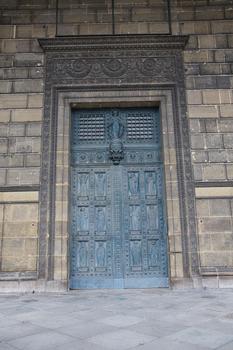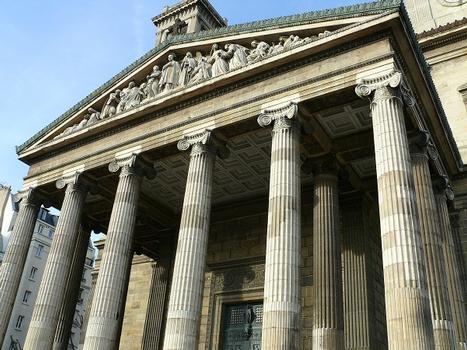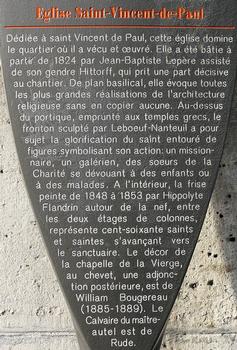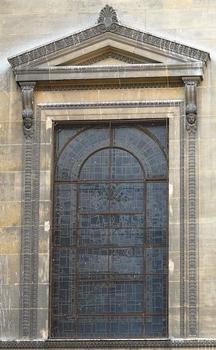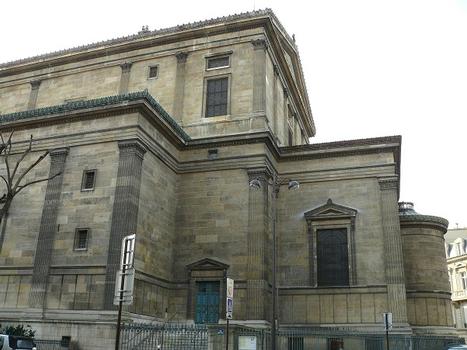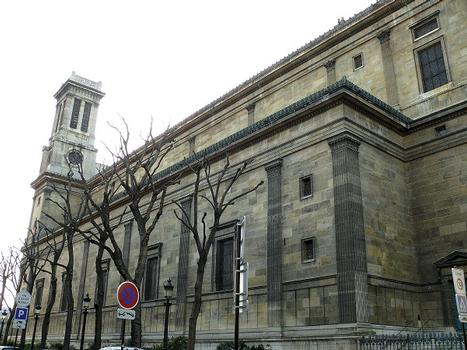General Information
Project Type
| Structure: |
Column and beam structure |
|---|---|
| Function / usage: |
Church |
Location
| Location: |
Paris (10th), Paris, Ile-de-France, France |
|---|---|
| Address: | place Frantz Liszt |
| Coordinates: | 48° 52' 43.68" N 2° 21' 6.59" E |
Technical Information
There currently is no technical data available.
Excerpt from Wikipedia
The Church of Saint-Vincent-de-Paul (Église Saint-Vincent-de-Paul) is a church in the 10th arrondissement of Paris dedicated to Saint Vincent de Paul. It gives its name to the Quartier Saint-Vincent-de-Paul around it.
History
The church was built during 1824–44, on the site of the ancient Saint-Lazare prison enclosure. In that enclosure had been located the Maison Saint-Lazare, occupied by Vincent de Paul— it was here that he lived and worked— and afterwards by the Congrégation de la Mission, from 1632 to 1793.
The church's design and the initial phases of its construction were entrusted to Jean-Baptiste Lepère, a French architect of modest reputation. The first stone was laid in August 1824 in the presence of the préfet de la Seine Gaspard de Chabrol and the archbishop of Paris Mgr de Quélen. Work proceeded slowly, and was repeatedly abandoned, being especially delayed because of a lack of credit as a result of the 1830 Revolution. Thus it was Lepère's son-in-law, Jacques Hittorff, who finally followed the project through from 1831 to 1844. The building opened for worship on 25 October 1844.
Hittorff massively modified the initial plans (which did not plan for even one tower), with his church opening onto the Place Franz-Liszt, giving the building a church square. He also added a system of ramps, laid out today in gardens, to aid access by horse-drawn carriages.
The church's basilical plan evokes several grand schemes of religious architecture without specifically copying one in particular. Above the portico (borrowed from those of Greek temples) is a pediment sculpted by Charles-François Lebœuf-Nanteuil on the subject of "The Apotheosis of Saint Vincent-de-Paul": the saint is glorified, surrounded by figures symbolising his saintly actions— a missionary, a galley slave, and some Daughters of Charity devoting themselves to children or to healing the sick. Inside, the painted frieze of 1848–53 around the nave (between the two levels of columns) is by Hippolyte Flandrin, and shows 160 male and female saints advancing towards the sanctuary. The decoration of the Lady Chapel, in the apse added later at the back, is by William-Adolphe Bouguereau (1885–89). The Calvary shown on the main altar is by François Rude.
The building suffered during the Paris Commune: the bell towers were hit by seven shells, and the terrace and ramps by more than twenty, all fired from the Père Lachaise Cemetery.
The Church of Saint-Vincent-de-Paul is close to the Eurostar and mainline station Gare du Nord, and so is twinned with St Pancras Old Church (a church in London close to the new St Pancras International station). This twinning was inaugurated on 11 December 2007 with a bilingual service at St Pancras Old Church.
Panoramic view of the church
Organ
The great organ
The church has two organs: a great organ and an orgue du choeur. The church's titular organists have included Louis Braille, better known for the Braille tactile writing system for the blind, Léon Boëllmann (1881–1897), Henri O'Kelly (1900–1918), and Jean Costa. The current organist is Pierre Cambourian.
The church's great organ, restored and enlarged by Danion-Gonzales in 1970, is made up of:
- 4 manual and pedal keyboards
- 66 stops
- 4,949 pipes
- Electric operation of the keyboards and stops
It was made in 1852 by the renowned organ builder Aristide Cavaillé-Coll, after whom the square behind the church is named. Originally it was only made up of 47 stops over 3 keyboards and 2,669 pipes.
Text imported from Wikipedia article "Saint-Vincent-de-Paul, Paris" and modified on July 22, 2019 according to the CC-BY-SA 4.0 International license.
Participants
- Jacques Ignace Hittorff (architect)
- Jean-Baptiste Lepère (architect)
Relevant Web Sites
Relevant Publications
- (1994): Le guide du Patrimoine: Paris. Ministère de la Culture - Hachette, Paris (France), pp. 586.
- (2008): Reconnaître Paris d'église en église. Massin, Paris (France), ISBN 978-2-7072-0583-4, pp. 221-225.
- About this
data sheet - Structure-ID
20003274 - Published on:
18/05/2002 - Last updated on:
24/06/2022

